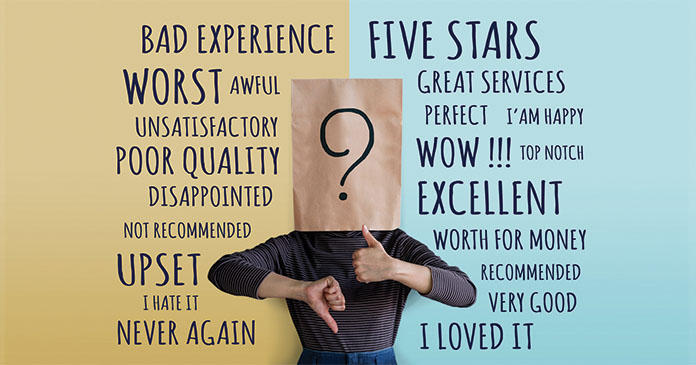What is the Role of a Chief Experience Officer and Do You Need One?
Have you heard of the term CXO or Chief Experience Officer before? Leading companies like VISA, Mastercard, and Google have already accepted this leading role in their team as a necessity for success. The Chief Experience Officer is a C-suite executive-level manager, who is responsible for all positive relationships, interactions, and experiences with and between […]

Have you heard of the term CXO or Chief Experience Officer before? Leading companies like VISA, Mastercard, and Google have already accepted this leading role in their team as a necessity for success.
The Chief Experience Officer is a C-suite executive-level manager, who is responsible for all positive relationships, interactions, and experiences with and between the customers of the company.
In order to create a good overall experience while using a certain product or service, all business units need to be coordinated and to vibe altogether as a brand. You can’t offer simplistic design, and in the meantime deliver a very complex registration process or confusing customer service. To achieve this, you need someone to align all teams in the same direction.
What are the responsibilities of a Chief Experience Officer?
Experiences are one thing that definitely immediately affects brand perception in the consumer’s mind. Product design, as well as services, can sometimes appeal to one customer and repulse another, merely because of personal preferences, whereas a positive experience involving another human being can cause them to repeat their visit or purchase, even if the product or service was lacking in some regard.
The CXO, per definition, focuses on experiences. The total customer experience can be summarized as interactions across all possible channels between your brand and the clients. Such can be:
- Social media (Phone, chat, email)
- Customer service
- Direct Sales
- Email campaigns
- Brand message
Talking about the brand messages, the CXO should be able to dictate the overall tone in which the company communicates with its clients or potential leads. This includes marketing campaigns, advertising, and even word of mouth to some extend.
The CXO Oversees the customer’s journey and the employee’s satisfaction

In order to know how different departments handle customer experience, the CXO’s team needs to devise a functional customer journey map or diagram. To do so, one must completely know the product or service they are offering from start to finish.
Using the client’s feelings to your advantage is no easy task but can ultimately lead to a major increase in the company’s revenue.
Alignment and action

The chief experience officer should act as a catalyst by increasing the creativity of several teams. The CXO should be a person who motivates people not only with their thoughts, suggestions, and leadership but with their presence as well. Regardless of the team responsible for a certain aspect of the business, we all often forget that the customer comes first, even before the product. Achieving a higher level of satisfaction among customers should be the top priority of any service.
Simply put, in order to increase customer satisfaction, a smart CXO should look for many ways to increase employee satisfaction in the first place. To make things clear, let’s explain with an ordinary example from day-to-day life. Have you ever been served by a miserable waiter? Can you tell the difference between a genuinely happy person who is doing their job and someone who just can’t wait to go home? Of course, you can.
Sometimes, being serviced by someone who hates their job can ruin our day.
A leading chief experience officer would first focus on making the work environment a pleasant place for all employees, starting with the ones who have direct contact with customers. And then, they should follow up by increasing customer satisfaction.
Metrics and listening
In order to achieve a good work environment that makes every employee happy, the chief experience officer would need to carefully consider the needs and demands of the employees. This is typically achieved by listening.
Moreover, metrics such as employee satisfaction score can be gathered by performing employee satisfaction surveys. Such should have specific questions, as well as open answer questions, that can be used for suggestions.
Strong Leadership

Not does only the CXO sit at the table with the CEO and CFO, but they also have to lead managers across various teams or at least nudge them in the right directions.
One of the roles of the CXO is to ensure that the designer team is perfectly aligned with the marketing strategy and tactics of the organisation. Some major corporations even establish a UX team (User experience), that closely moderates the relationship between departments in the company so that everything aligns perfectly for the customer journey to run smoothly.
In order to properly set up the links between departments, the CXO must:
- Be aware of how users use the product, what direction should the business head to, and the technology behind all products and services of the company.
- Have a clear vision of how the product or service would grow and expand.
- Have a plan of action, in order to establish a valid output.
Thus, simply put, the CXO should be entangled with almost all creative and business departments in a company.
Vision and Clarity
As mentioned above, the chief experience officer should ensure that all departments work together toward achieving the same goals by following identical organisational directions.
The general vision of the company regarding customer experience should fit in one very clear sentence. Think about it like a value proposition, but not about your product, but for your customers. What are you giving them?
A great example here for a customer experience, which aligns with the value proposition of the company would be Unbounce’s “A/B testing without tech headaches.”

What is the company offering? A/B testing. How is the user going to experience it? Differently than usual, without any technical difficulties. Their strongest selling point here is that no coding is required.
Their homepage has evolved ever since, but the general user experience has been kept the same with a clear vision.

As you can clearly see, the vision of the company remains the same. But delivers the message in an evolved manner.
Does every company need a CXO?

Have you heard of the term “working in silos”? Nowadays, big corporations tend to split their matrix structure into many teams. Sometimes the links between the teams don’t align as perfectly as they need to.
Incorporating project managers, as well as team leaders often help, but sometimes people just close themselves into a certain team and work with nobody else. This leads to teams working on the same tasks and replicating unnecessary steps.
Aside from that, the whole working in silos can lead to misaligned priorities and limited collaboration between employees from different teams.
One of the chief experience officer’s main responsibilities is not only to make everyone happy and productive but also to establish these unbreakable links between teams.
Effective organisations use the CXO as an antidote to the silo mentality. With the lack of an experienced CXO, the unified vision of your company would rather blur. But not everyone can do the job. A very specific set of skills is needed in order to fill the shoes of a Chief Experience Officer.
What are the qualities a CXO should have?
If you are feeling convinced that your company needs a CXO, you should know what kind of a person to look for.
An eye for data
Look for a person who can analyze simple metrics at a glance. They should be able to immediately spot trends, and tendencies among different KPIs and devise strategies on how to deal with inconsistencies or capitalise on certain positive events.
Of course, teams shouldn’t pile up raw reports and overwhelm the CXO. Instead, they should be presenting solutions to already detected trends and problems.
Charm and communication

Look for a charming easy-going person who can convince anyone of anything. On the other hand, don’t look for this quality in isolation, because it can lead to great disasters if the person who convinces each team to take on a certain approach ends up being wrong about the company’s overall direction.
A successful CXO can always communicate the desired results in terms of how company departments should interlink.
A flexible mind
As the last couple of years made certain to show us, things change. And when exterior environments change, so do people.
A good chief experience officer should be able to change the company’s customer experience direction according to the public’s needs. Adapting when everything is dynamic is no easy task. Keeping internal and external shareholders happy is something that requires serious skills in terms of negotiations, presenting, and defending a hypothesis.
The CXO should be able to do all of the abovementioned with their hands behind their back.
Conclusion
Despite being a relatively new position, the position of a Chief Experience Officer has a ton of responsibilities and requires a very specific skill set. A successful CXO should first focus on creating a happy environment for the employees, and then for the customers.
Nowadays, with the increasingly dynamic external environments of organizations, more and more responsibilities pile up on the CEO’s desk. The CXO is a role that relieves them in a manner of taking things into their hands. If you are a company’s CEO and you are getting to feel preoccupied consider hiring a Chief Experience Officer.

